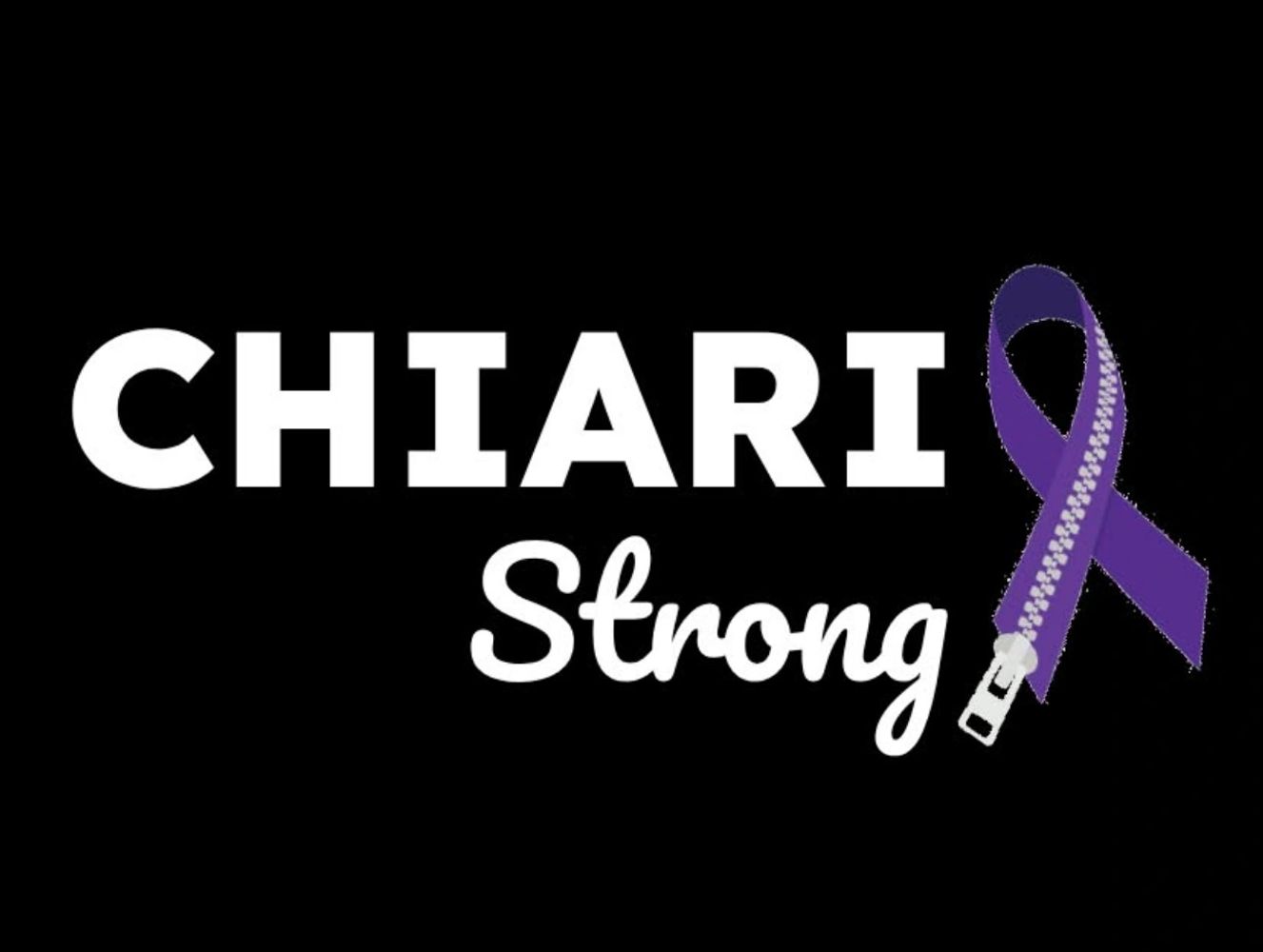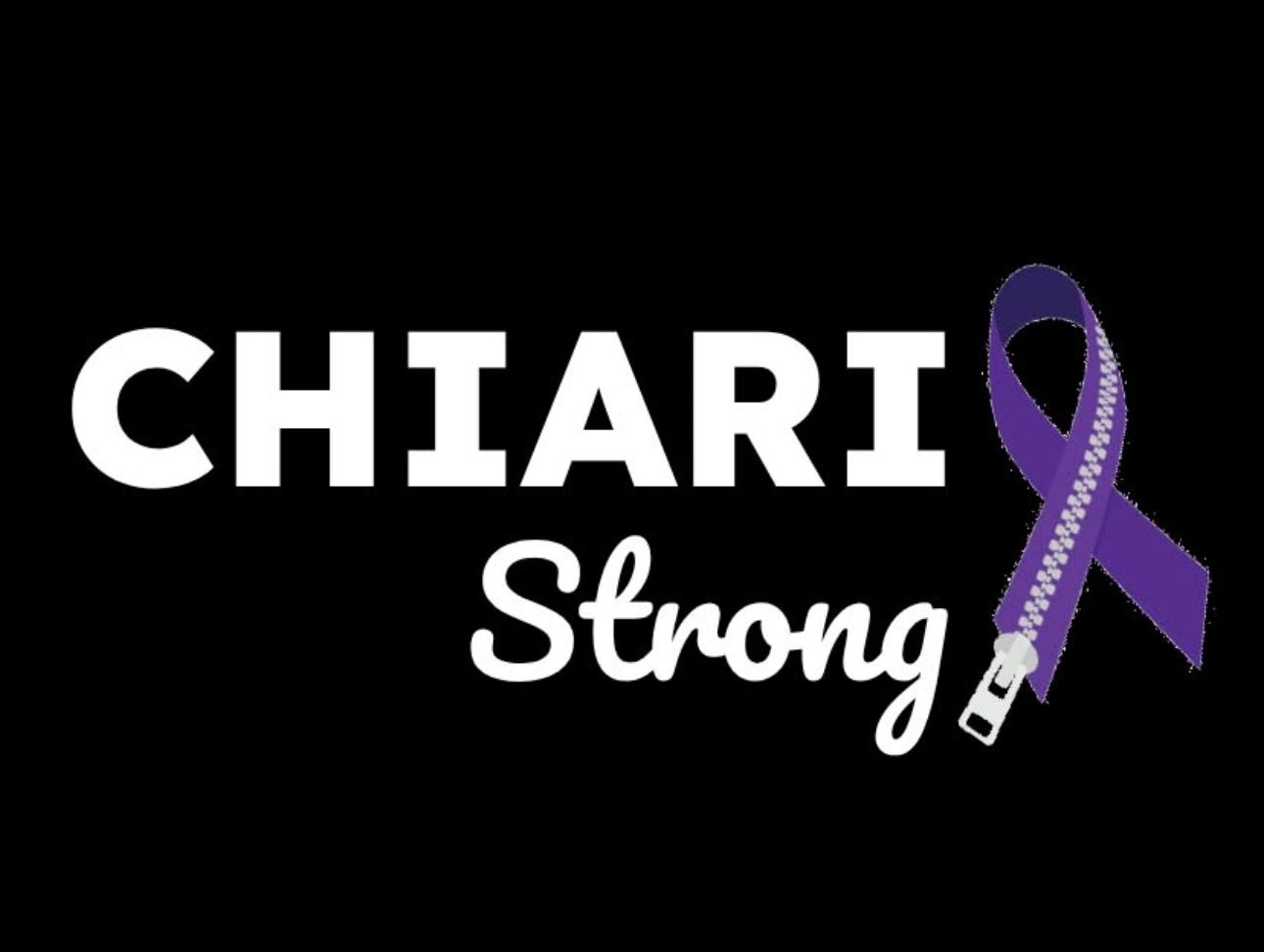

Studies show that about 1 in every 1,000 people in the United States has Chiari Malformation. This means a lot of people are affected across the country. The severity and diagnosis rates vary by age and population.
Research also shows that Chiari Malformation is becoming more common. This is thanks to better imaging technology that helps find it earlier and more accurately.
Our Mission
At Chiari Strong, we are dedicated to raising awareness about Chiari Malformation and supporting those affected. Our mission is to provide a compassionate community for patients and families. Our main goal is to provide care packages to those being admitted for surgery. These care packages will impact these patients in Southwest Missouri. We hope to grow to a statewide level in Missouri and surrounding states!!!
Did you know?

There are 5 types of Chiari Malformation
Chiari malformation is a structural defect where part of the cerebellum, the lower portion of the brain, extends into the spinal canal. Causes: The exact cause of Chiari malformation is unknown.
It may be related to: Genetic factors, Structural abnormalities in the skull or spine, and Hydrocephalus (excess fluid in the brain).

Type 0
Type 0 is very rare. In this type, there are little to no parts of your cerebellum in the hole at the base of your skull (foramen magnum) but there is crowding at that level. Symptoms occur because of an abnormal flow of cerebrospinal fluid near the base of your skull.

Type 1
Type 1
Most Common-Develops as the skull and brain are growing. Symptoms may not occur until late childhood or adulthood
-Neck pain
-Unsteady walk and trouble with balance
-Numbness/tingling of the hands and feet
-Dizziness
-Trouble swallowing This sometimes happens with gagging, choking and vomiting
-Speech changes, such as hoarseness
-Poor han
Most Common-Develops as the skull and brain are growing. Symptoms may not occur until late childhood or adulthood
-Neck pain
-Unsteady walk and trouble with balance
-Numbness/tingling of the hands and feet
-Dizziness
-Trouble swallowing This sometimes happens with gagging, choking and vomiting
-Speech changes, such as hoarseness
-Poor hand coordination
Less often, people with Chiari Malformation may experience:
-Ringing or buzzing in the ears, known as tinnitus.
-Weakness
-Slow heart rhythm
-Curvature of the spine, known as scoliosis. The curvature is related to spinal cord impairment
-Trouble with breathing

Type 2
Type 1
A greater amount of tissue extends into the spinal canal compared with that in Chiari Malformation type 1.
Symptoms can include those related to a form of Spina Bifida called myelomeningocele. Chiari Malformation type 2 nearly always occurs with myelomeningocele. In myelomeningocele, the backbone and the spinal canal don't close properly b
A greater amount of tissue extends into the spinal canal compared with that in Chiari Malformation type 1.
Symptoms can include those related to a form of Spina Bifida called myelomeningocele. Chiari Malformation type 2 nearly always occurs with myelomeningocele. In myelomeningocele, the backbone and the spinal canal don't close properly before birth.
Symptoms may include:
-Changes in breathing pattern
-Trouble swallowing, such as gagging
-Quick downward eye movements
-Weakness in the arms
Chiari malformation type 2 is usually noted with ultrasound during pregnancy. It also may be diagnosed after birth or in early infancy.

Type 3
Chiari malformation type 3 is the most serious type of the condition. A portion of the lower back part of the brain, known as the cerebellum, or the brainstem extend through an opening in the skull. This form of Chiari malformation is diagnosed at birth or during pregnancy with an ultrasound.
Chiari malformation type 3 causes brain and nervous system issues and has a higher rate of death.

Type 4
Chiari malformation type IV is rare and happens when your cerebellum itself is underdeveloped or has parts missing. This type is severe and usually life-threatening in infants.

Help Chiari Strong Make a Difference
Join us in our mission to help Chiari Malformation patients in their journey to recovery.